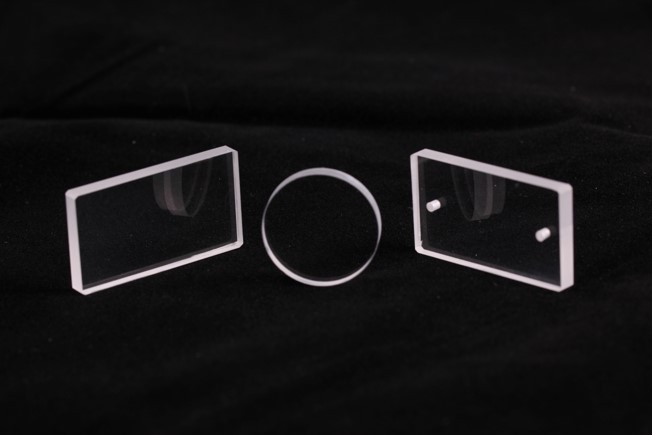Hilger Crystals has a well-established history and proven reputation for producing high-quality, commercial grade synthetic optical crystals for making infrared windows and optics used in infrared FTIR spectroscopy. It’s ability to grow synthetic crystals in large volumes and to incredibly demanding specifications is further boosted by their close collaboration with customers — a practice that has proven successful from prototyping new research to wide-reaching commercial engagements.
Crystals typically range from 2mm to 300mm in size and are supplied as sawn blanks, fine ground blanks or pre-polished blanks. Hilger Crystals manufactures optical crystals from the following materials:
Calcium Fluoride – CaF2
Widespread IR and near UV application as spectroscopic windows, prisms and lenses. Useful application in the UV as Eximer laser windows. Available doped with Europium as a gamma-ray scintillator.
Caesium Iodide – CsI
The material with the deepest known IR transmission, CsI is often used for components in wide range spectrophotometers. A soft material that is rugged and shock resistant, slightly hygroscopic. Doped with Thallium, CsI(Tl) is a useful scintillator.
Potassium Bromide – KBr
Potassium Bromide is one of the most useful materials for general purpose spectroscopic windows and applications where sensitivity to moisture is unimportant. KBr is the most commonly used beamsplitter material for IR spectrophotometers.
Potassium Chloride – KCl
Potassium Chloride finds application for IR laser windows due to its high laser damage threshold.
Sodium Chloride – NaCl
Sodium Chloride, common rock salt, is one of the most useful materials for general purpose spectroscopic windows and applications where sensitivity to moisture is unimportant.

